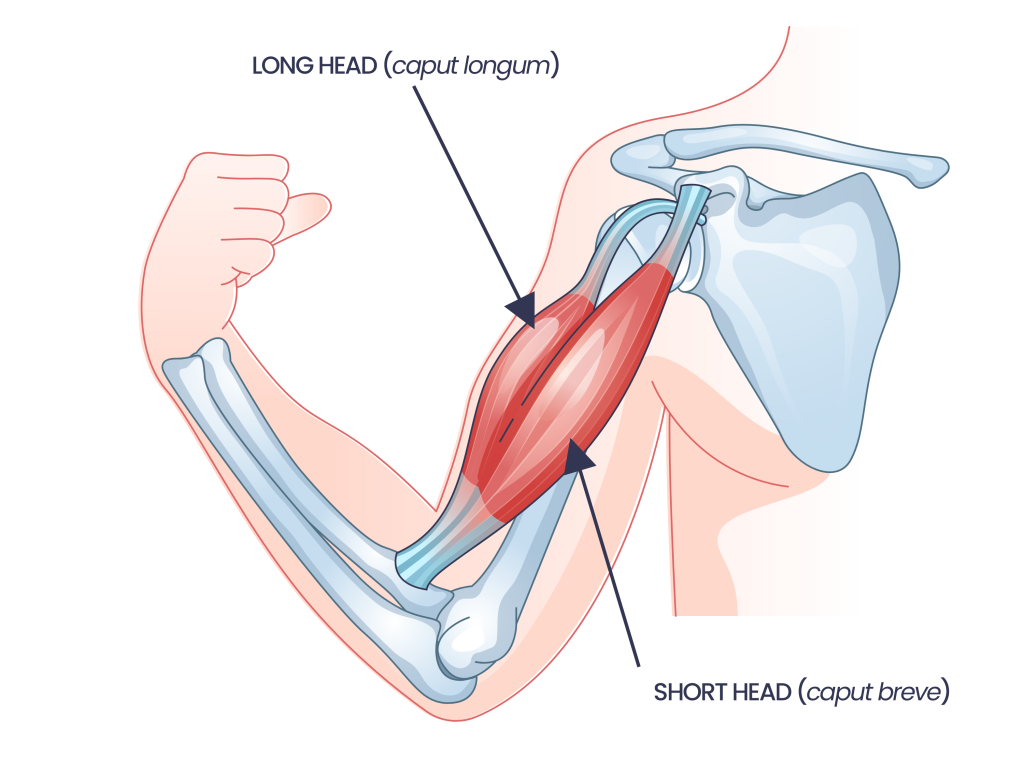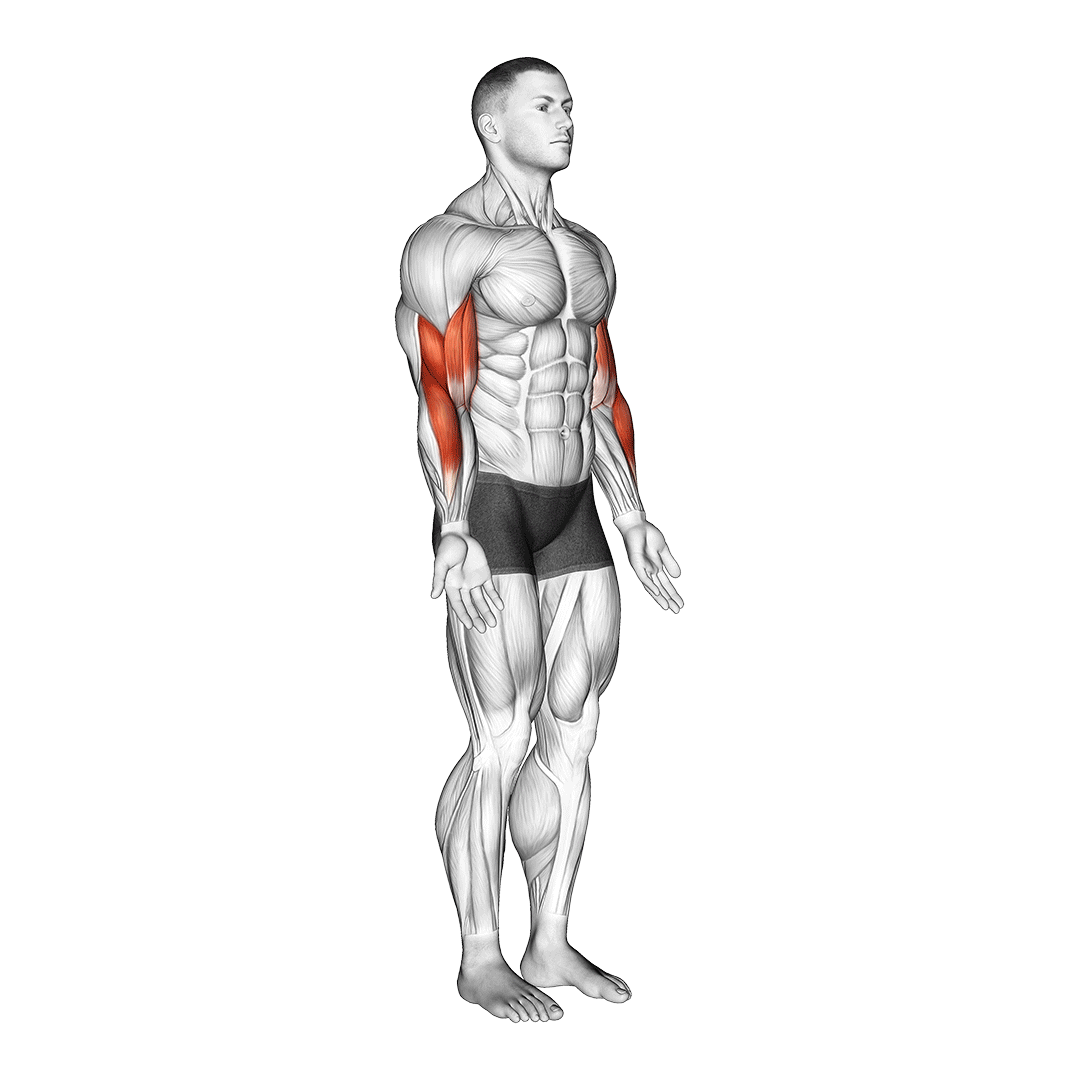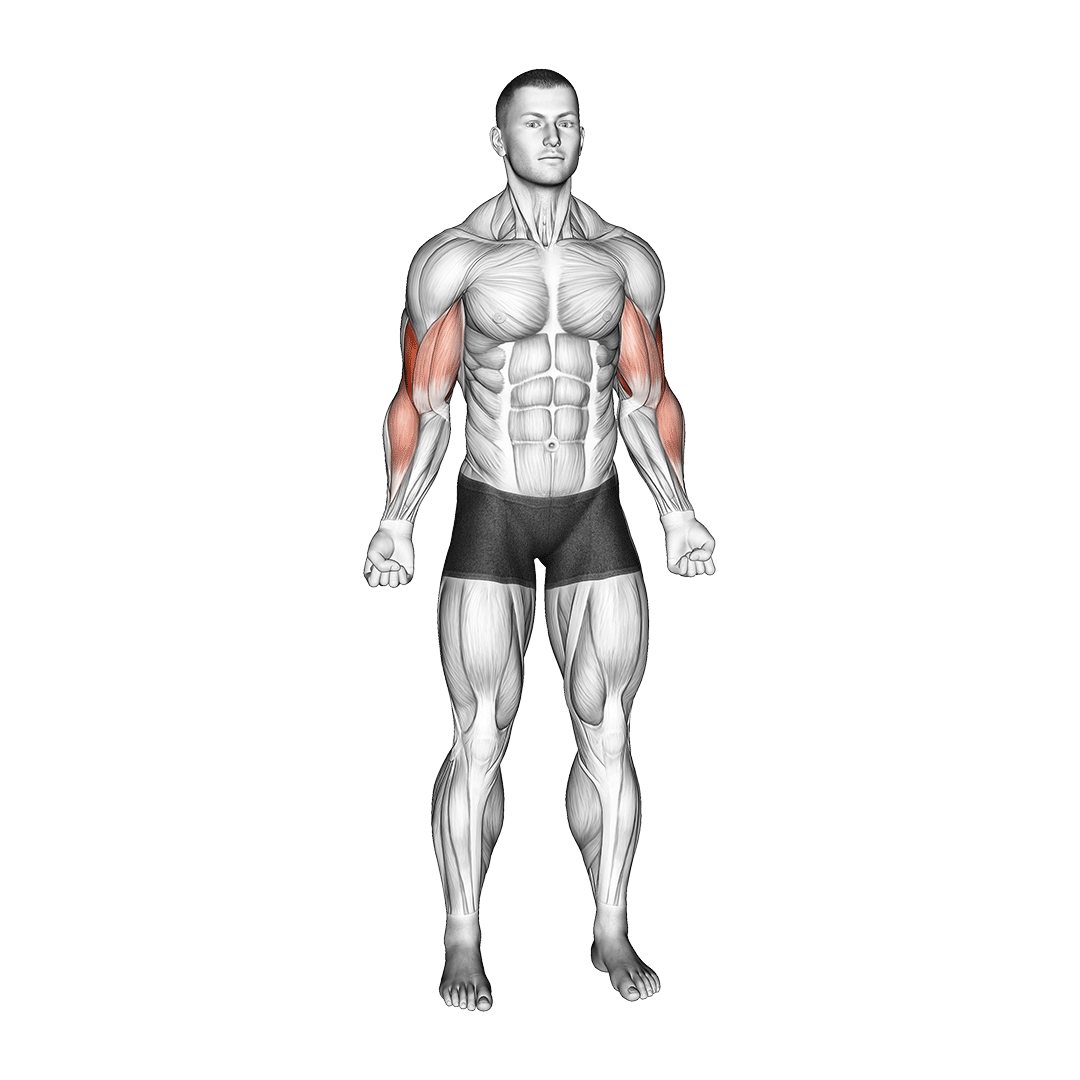Do Chin-Ups Work Biceps? Yes, Here's How
Where the pull-up is more lat-dominant, the chin-up exchanges some small focus on the back for far greater recruitment of the biceps.
So - not only do chin-ups work the biceps, but they do so to a comparatively better degree than many other compound pulling exercises.
Of course, the quality and effectiveness of this contraction will depend on your individual technique and physiology. Ensure the hands are set approximately shoulder-width apart, and that no kipping or “cheating” of the rep is present.
How the Biceps Brachii are Contracted
The biceps are a pair of skeletal muscles extending from the shoulder joint to the elbow, located along the anterior section of the humerus.

Biceps Brachii Action
The main biomechanical function of the biceps is to flex the forearm - meaning that any activity involving moving the forearm towards the shoulder or chest will inevitably involve the biceps.

Alongside forearm flexion, the biceps also feature a secondary mechanical action during supination or outward rotation of the forearms.
These biomechanics will frequently also include the brachialis and brachioradialis muscles, of which include the biceps to form the forearm flexor muscle group.
Why are Chin-Ups Better for Working the Biceps?
With the chin-up involving both forearm flexion (as the elbows bend) and supination (the palms facing inwards), we can see why the chin-up is considered to be a far better biceps exercise than other variations of the pull-up.

Tips on Getting More Biceps Activation During Chin-Ups
Of course, the actual extent to which your biceps are worked by chin-ups will vary on quite a few factors.
As far as technique goes, the following tweaks can help maximize how well the biceps are targeted during a set of chin-ups.
Ensure the Top of the ROM is Completed
Throughout the entire chin-up range of motion, the biceps are contracted to the greatest degree specifically during the upper half - where the arms go from being fully extended to bending at the elbow.

It goes without saying that in order to fully contract the biceps, this range must be completed to the fullest extent.
Each chin-up repetition should involve the head being raised high over the bar, the elbows moving through a full range of flexion.
Avoid Excessively Wide Hand Positioning
Though the biceps will contract regardless of how far apart the hands are placed, the most advantageous positioning is one within shoulder-width distance.
This allows for equal distribution of stimulus between both bicep heads, and a comparatively greater range of contraction as well.
Note that optimal grip width will depend on your own unique proportions and muscular attachment points. Shoulder-width hand positioning is simply a basic guideline to experiment around.
Use a Full Grip, Not a False Grip
If the diameter of your pull-up bar allows, using a full grip (thumbs encircling the bar) will allow for significantly greater arm muscle contraction than a false (thumbless) grip.
Apart from allowing for greater muscular recruitment, a full grip is also considerably safer, and all-around a better choice outside of lifters specifically seeking to isolate their lats.
Draw the Elbows Behind the Back
To further engage the biceps, the elbows must be drawn parallel to the sides of the body as the head rises above the pull-up bar.

Doing so maximizes the extent to which the biceps are concentrically contracted, ensuring a full “squeeze” is achieved while also reducing strain on the shoulder joint.
Consider Using Wrist Straps or Hooks
After an extensive number of sets, it is not uncommon for bodyweight athletes to find their forearms unable to bear the weight of their own body.
Apart from performing grip endurance work (dead hangs or farmer’s walks), one short-term workaround is to make use of wrist straps and wrist hooks. Both are relatively cheap pieces of training equipment used to eliminate grip strength from an exercise - even vertical pulling movements like the chin-up.
Alongside allowing you to perform more sets, hooks and straps are also excellent for distributing greater tension and load to the biceps by eliminating the forearm flexor muscles from the movement.
Chin-Up Alternatives for Training the Biceps
In the event that you find chin-ups to be a poor exercise for working the biceps, there are a few similar pulling movements that act as perfect substitutes.
Underhand Inverted Rows
Inverted rows are one of the few bodyweight horizontal pulling exercises out there - and can also be excellent for targeting the biceps, if a supinated grip is utilized.
Perform underhand inverted rows in cases where bearing the entirety of your own bodyweight during chin-ups tends to limit your training.
Yates Rows
Yates rows are a variation of barbell row where the hands are set close together as they remain in a supinated orientation.

Like chin-ups, the Yates row is considered to be a more biceps-focused alternative among its sister exercises, and is excellent for targeting them in a widely-reaching compound movement.
Bodyweight Bicep Curls
A rather uncommon calisthenics exercise that uses the lifter’s own leg as a source of resistance; bodyweight bicep curls are the calisthenics athlete’s solution to biceps isolation work.

Rather than having the biceps be overshadowed by the far larger back muscles, swapping out the chin-up
Should You Do Chin-Ups for Biceps Growth?
Though chin-ups are indeed better at working the biceps than most other vertical pulling exercises, they are not the best biceps exercise per se.
If you are a calisthenics athlete or are otherwise limited to a bodyweight-only set-up, then chin-ups are likely your best choice.
However, the smaller nature of the biceps themselves means that they are easily outpaced by muscles like the latissimus dorsi or trapezius. To prevent this from occurring, opting for isolation exercises targeting the biceps is a far better route.
References
1 Hewit, Jennifer. (2018). A Comparison of Muscle Activation during the Pull-up and Three Alternative Pulling Exercises. Journal of Physical Fitness, Medicine & Treatment in Sports. 5. 10.19080/JPFMTS.2018.05.555669.
